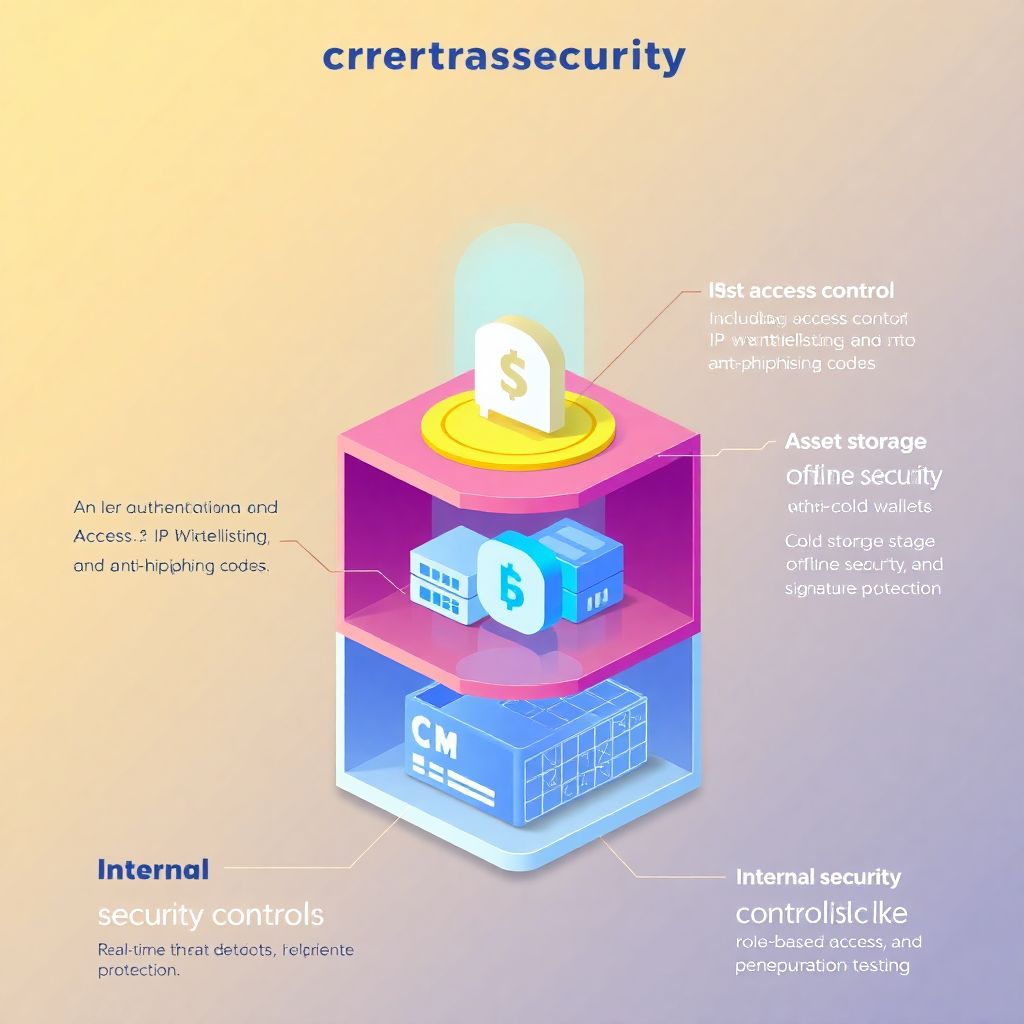Understanding Safety Layers in Crypto Exchanges

Cryptocurrency trading has rapidly evolved over the past decade, but with growth comes increasing security risks. If you’re new to digital assets, understanding the multi-layered approach to safety used by crypto exchanges is essential. This guide walks you through the core components of crypto exchange security, common pitfalls, and how to choose a safe crypto exchange that matches your needs.
Why Security Layers Matter in Crypto Trading
Unlike banks, which offer some level of government-backed protection, cryptocurrency exchanges operate in a decentralized and often less regulated environment. That means the responsibility for protecting your funds largely falls on both the platform and you.
Modern crypto exchange security features are designed to deter attacks from multiple vectors—hacking, phishing, insider threats, and more. Security layers function like concentric shields: if one fails, others are in place to mitigate potential damage.
Layer 1: User Authentication and Access Control
The first line of defense begins with how users access their accounts. Reputable exchanges implement several user-side security measures:
– Two-Factor Authentication (2FA): Often via apps like Google Authenticator or hardware keys like YubiKey.
– IP Whitelisting and Login Alerts: Notifying users of suspicious login attempts or requiring logins from known devices.
– Anti-phishing Codes: Personalized verification codes sent in official emails to distinguish real messages from scams.
Tip for beginners: Always enable 2FA and never share your authentication codes, even with someone claiming to be from the exchange.
Layer 2: Asset Storage and Wallet Infrastructure

Secure cryptocurrency trading platforms use a combination of hot and cold wallets to manage funds. Hot wallets are connected to the internet and used for day-to-day transactions, while cold wallets remain offline and are far less vulnerable to hacking.
Advanced exchanges follow these principles:
– Limit hot wallet exposure to a small percentage of total funds.
– Use multi-signature wallets to require multiple approvals for transfers.
– Conduct regular audits of wallet balances and movement.
Warning: Don’t leave large sums on exchange wallets
One of the most common and dangerous mistakes is storing all of your crypto on an exchange. Even the best secure crypto exchanges can be compromised. Consider transferring your assets to a private wallet, especially for long-term holdings.
Layer 3: Internal Security Controls

While user-facing tools are important, backend protections are equally critical. Top-tier exchanges invest heavily in infrastructure and employee training:
– Regular penetration testing by third-party experts
– Role-based access control for internal systems
– Real-time threat detection and incident response mechanisms
Red Flag: No Transparency or Security Audits
If an exchange doesn’t publish regular security audit results or fails to explain its internal protocols, that’s a major warning sign. Transparency is a key indicator of reliability.
Crypto Exchange Safety Tips for Beginners
Navigating the crypto landscape can be intimidating. Here are some essential crypto exchange safety tips that can help protect your assets:
– Research before registering: Check reputation, user reviews, and regulatory compliance.
– Verify domain URLs: Phishing attacks often mimic exchange websites with slight spelling changes.
– Avoid public Wi-Fi: Especially when logging into accounts or making trades.
Additionally, when learning how to choose a safe crypto exchange, look for platforms that combine user-friendly interfaces with robust security policies. Don’t just chase low fees or flashy interfaces—security should always come first.
Common Mistakes New Traders Make
Even with secure platforms, user error remains a major vulnerability. Here are several frequent missteps:
– Ignoring updates: Not updating your apps or wallets can expose you to known exploits.
– Using weak passwords: A surprising number of users still rely on easily guessable passwords.
– Falling for scams: Impersonators, fake giveaways, and Telegram support frauds are rampant.
Pro Tip: Avoid storing passwords in browsers or unsecured notes apps
Instead, use a reputable password manager and back up your recovery phrases offline.
Final Thoughts
Safety in crypto trading is not just about choosing the right platform—it’s about developing secure habits and staying informed. With the increasing sophistication of threats, understanding the layered security model of exchanges is more important than ever.
By choosing among the best secure crypto exchanges and following basic security hygiene, you gain more than just peace of mind—you ensure that your financial future is built on a solid, protected foundation.
Remember, in the world of secure cryptocurrency trading platforms, your best defense is knowledge and vigilance.

